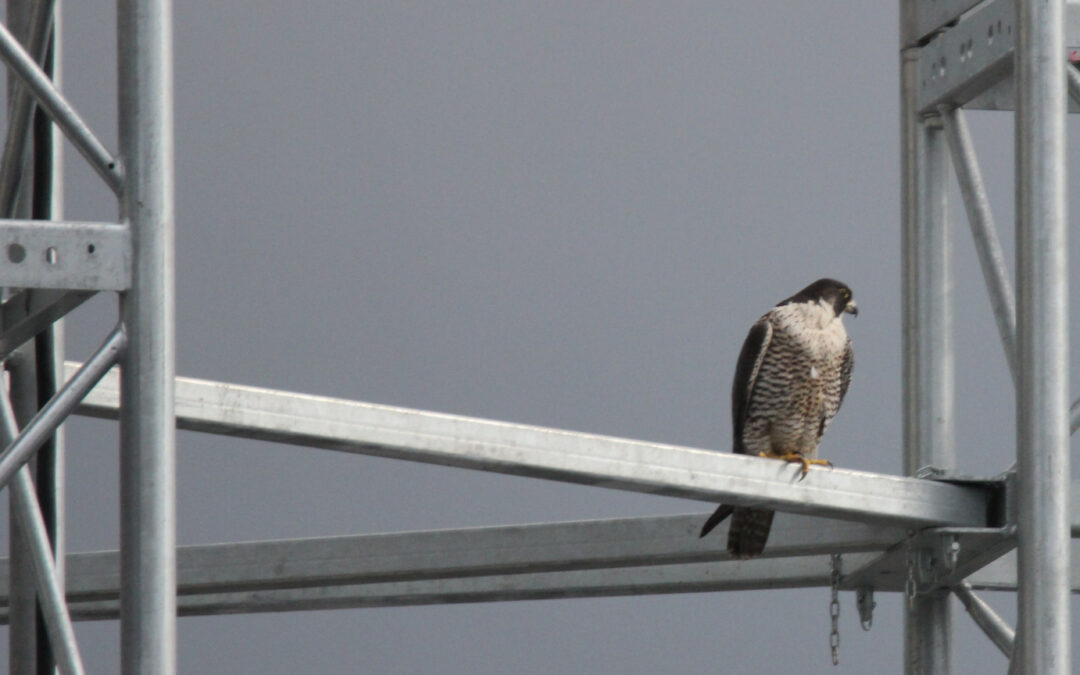For six weeks, they were observed from afar and they inspired a genuine soap opera on social media.
The three baby falcons that were born on the 32nd floor of Place Victoria in early May, have indeed garnered a lot of attention. Their growth has been followed live since hatch and protective measures have been quickly deployed by our supplier, Maçonnerie Rainville et Frères (MRF), in collaboration with the organization Falcon Environmental, to closely monitor their development.
Why so much interest? The peregrine falcon (falco peregrinus) is a protected species in Quebec and when chicks see light of day in a human-built environment, it automatically triggers protective measures, allowing time for the young to grow safely and learn to fly. It was therefore necessary to quickly develop a contingency plan and act with great benevolence during these six weeks of development.
Falcons have come to nest on the 32nd floor of Place Victoria before. This is not a first. Over time, bird watchers working in Place Victoria got used to observing them and shared their findings with specialized groups on social media. The novelty is that for the past two years, no peregrine falcons had been seen at Place Victoria.
Creatures of habit… and determination
The open areas of the mechanical floors had nevertheless been protected by nets when renovation work began, precisely to discourage potential falcons from settling there, but it seems that this year, these astute and determined parents settled directly on the very thin ledge that goes around the floor, not at all intimidated by the renovation work that had been in full swing for several months.
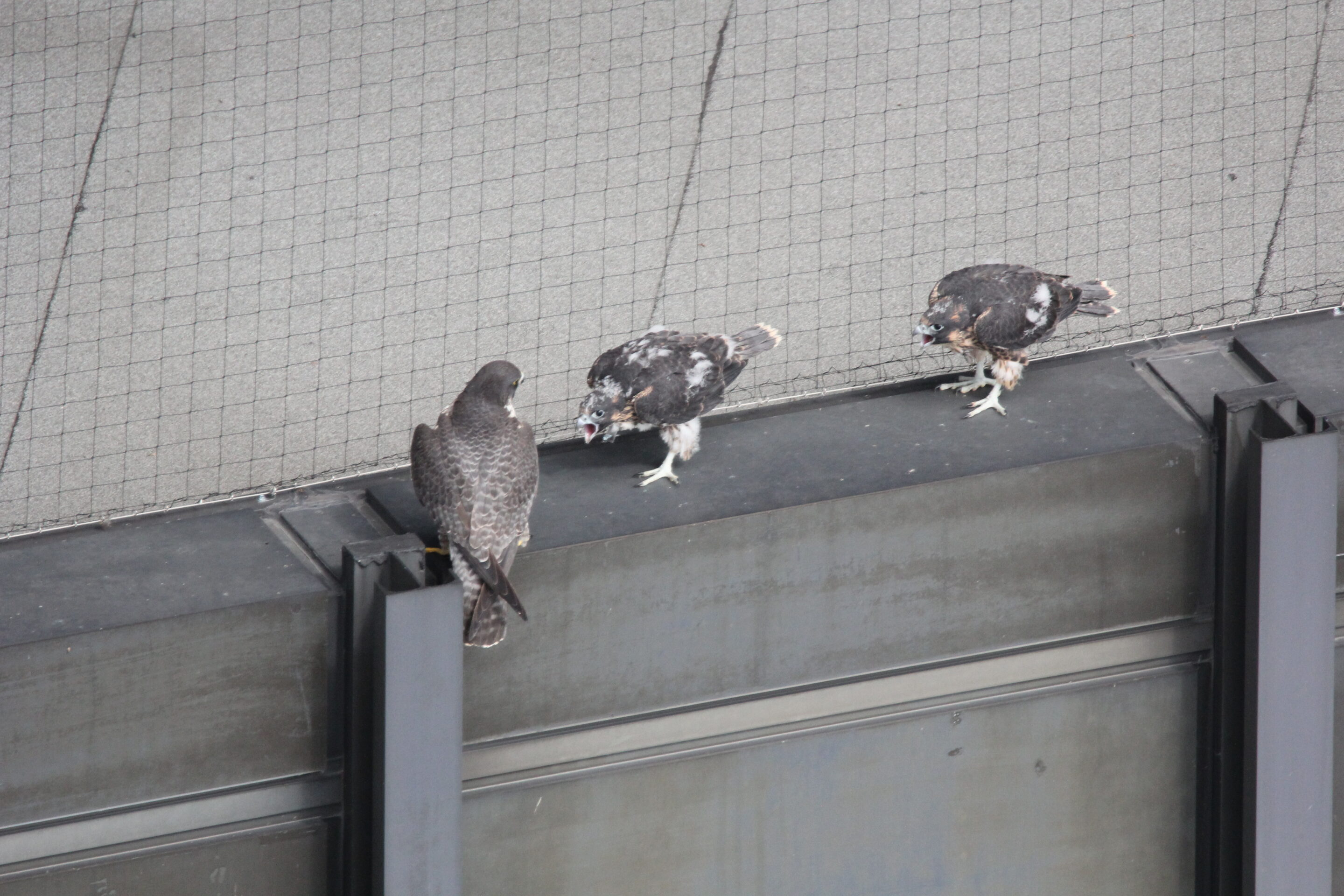
Photo by Falcon Environmental
Sarah Gagnon, biologist and project manager at Falcon Environmental, explains that normally, parents want to nest in a sheltered place, as high as possible. “Couples look for a very high location and also need a spot of a good width so that the eggs do not roll down the nest, with a good substrate for incubating. We were a little surprised to see that they had chosen this exposed location on a very narrow metal edge.”
Let’s just say that the couple’s choice of home surprised several people, starting with Diane Duhamel, administrative assistant at Fasken, who could clearly hear the chicks calling very loudly from her office, located just above the nest box on the 33rd floor.
As a result, the arrival of the baby falcons made headlines a few times on social media and sparked some speculation about the family’s well-being, but Falcon Environmental’s experts believe that the young began to fly on their own on the expected date, without rushing, in accordance with their normal development schedule.
Curious chicks
Over the course of seven half-days of observation, biologists found that the family did not seem stressed by the movements of the lifting platform and that the parents were taking good care of the chicks. “Our biologist observed that at one point, a youngster even approached the platform when it reached the nest area,” says Sarah Gagnon of Falcon Environmental. “It’s really more a sign of curiosity than stress. We read on some Facebook pages that the parents seemed stressed, but that’s not what was observed in the field,” she explains.
Falcons are used to urban environments and all kinds of movement. Moreover, the fact that the lifting platform is completely enclosed in an opaque material prevents the falcons from seeing the workers and, as a result, they do not feel any particular threat to their nest, even with movement nearby.
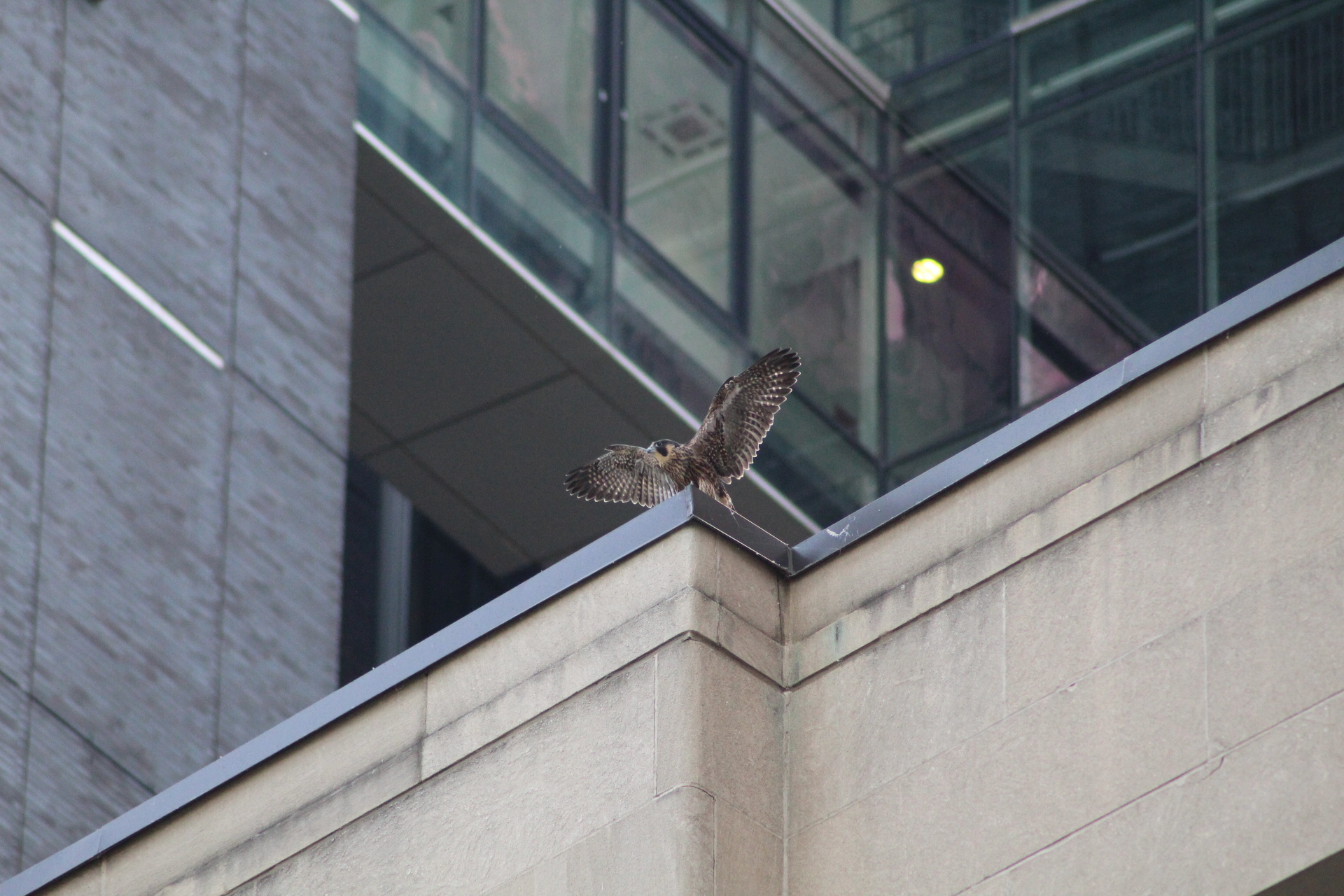
First solo flights – Photo by Falcon Environmental
It’s in that setting that the young falcons began to fly on their own during the week of June 17. They were spotted on various high points around Place Victoria, closely monitored by their parents. Unfortunately, a few days later, one of the three youngsters collapsed during one of its flights and did not survive the fall, a phenomenon that is not uncommon, explains biologist Andrea Brown. “Statistically, the third and fourth falcons in the same brood have a lower chance of survival,” says the person who carried out most of the observations. “With two falcons having fledged, we can really say that this is a success story for this family,” concludes the biologist. She also explains that the quartet will probably spend the summer in the neighbourhood, return to the nest occasionally and that the parents will continue to feed the youngsters until they leave for their migration in the fall.
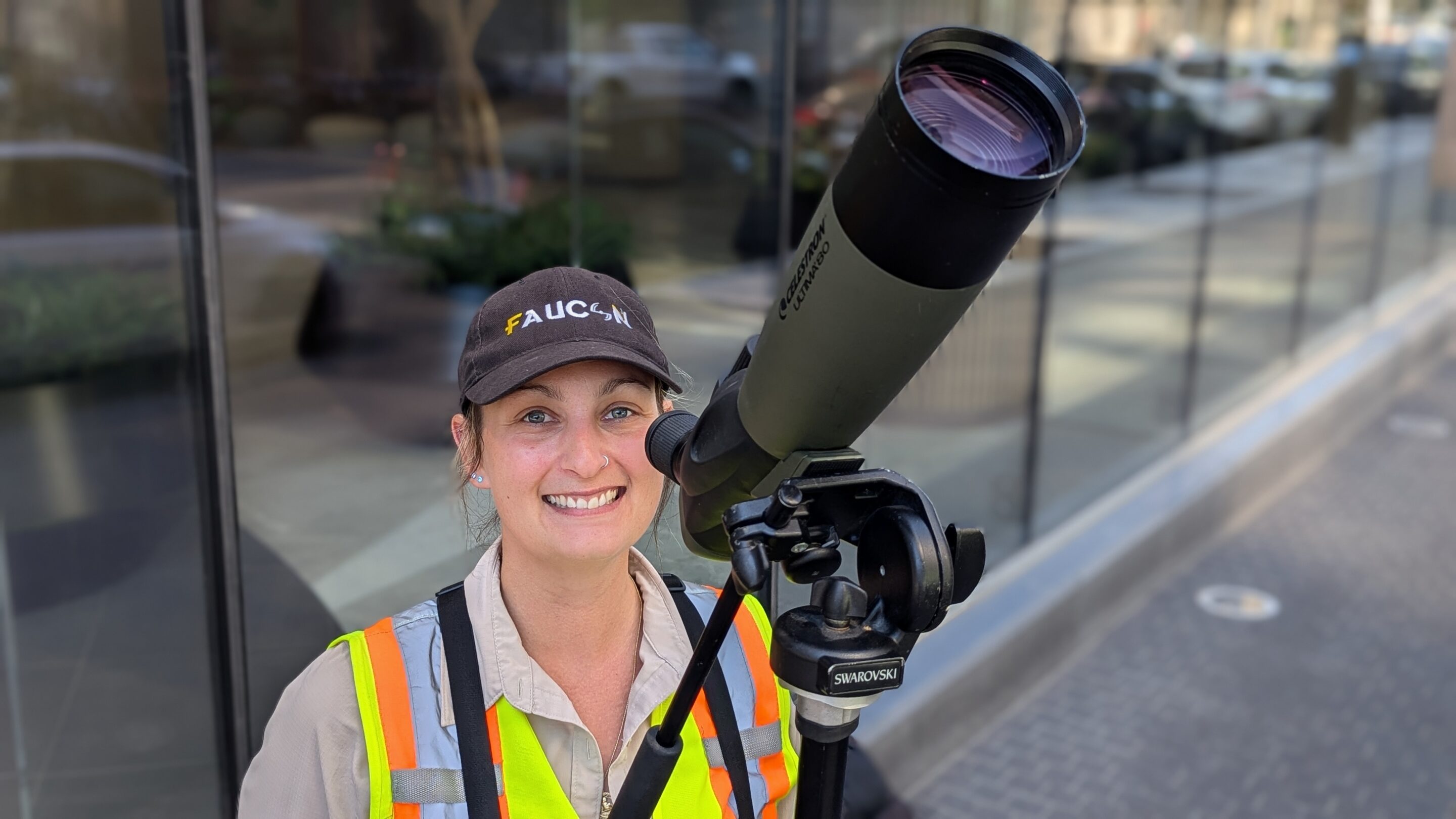
Andrea Brown, biologist for Falcon Environmental, has made most of the observations at Place Victoria – Photo COLOKIA
To conclude the epic journey of “our” falcon family through Old Montreal, let us acknowledge the generous collaboration of Broccolini, who allowed biologists from Falcon Environmental to go up to an unoccupied apartment on the 46th floor of the building across the street providing a bird’s eye view (no pun intended) of all the activity in the nest area.
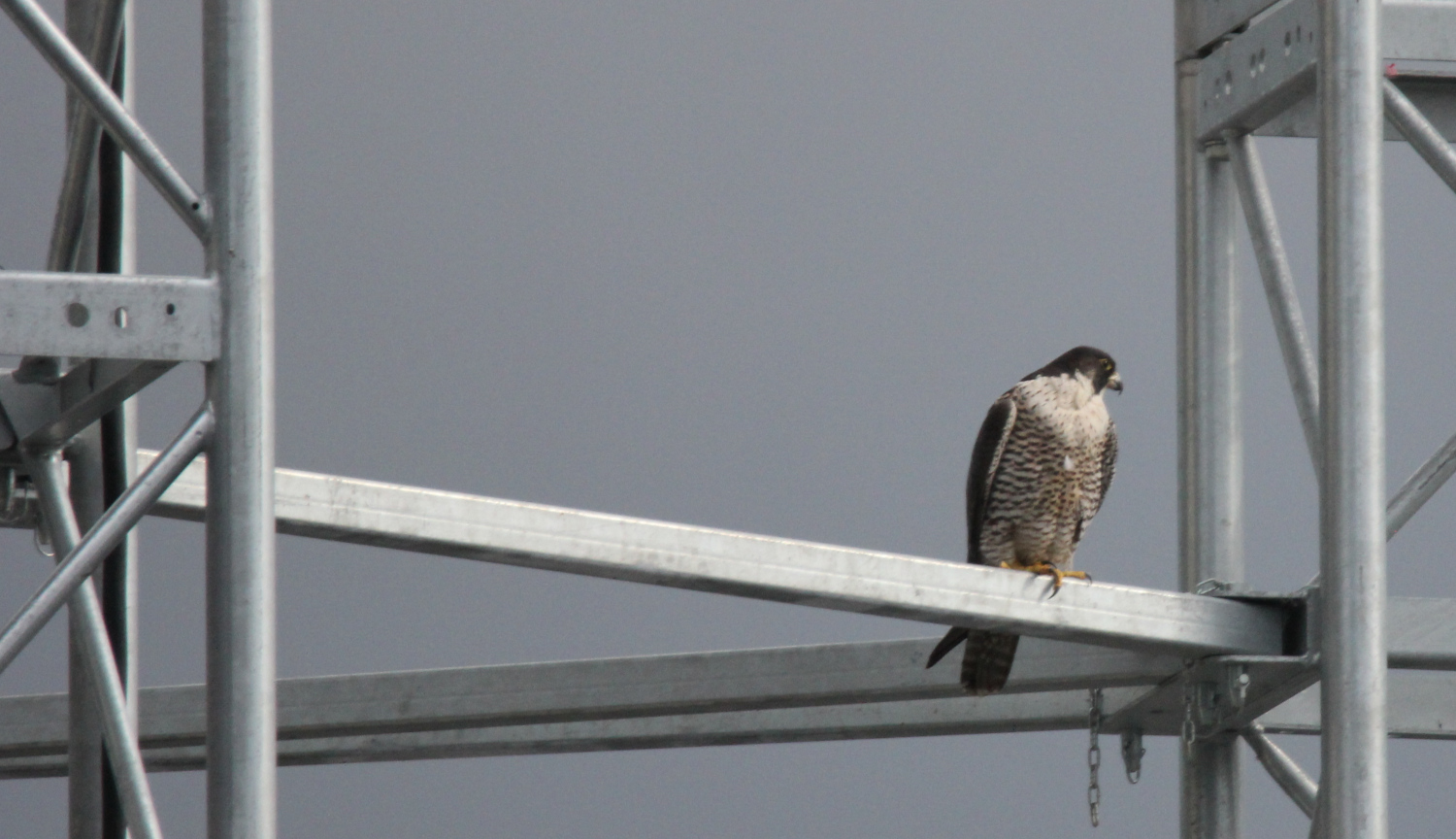
ACTION PLAN
Action plan submitted to the Direction de la gestion de la faune de l’Estrie, de Montréal, de la Montérégie et de Laval, which was satisfied with the measures put in place to preserve the well-being of the little family, namely:
- Control measures and prohibition of passage near the nest box via the inside of the building;
- Installation of an opaque canvas to better conceal MRF workers;
- Distribution of instructions for workers to significantly limit the movements of the lifting platform on this column during the day;
- Decree that no renovation work will take place on the southwest corner of Place Victoria before the falcons have definitively left the family nest;
- Mandate Falcon Environmental to carry out behavioral monitoring three times a week to observe possible behavioral changes and implement additional measures as required.
